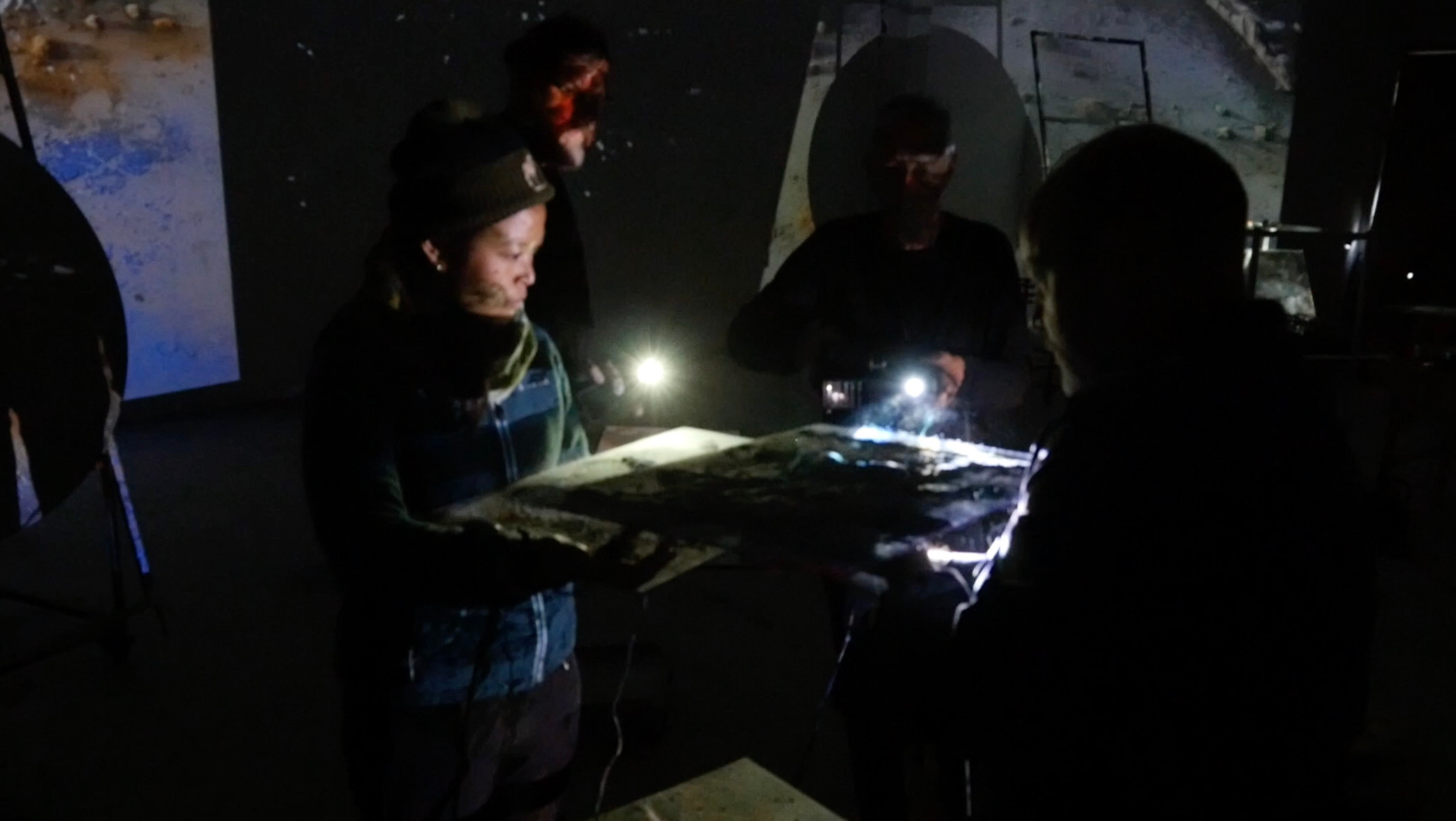Øyvind Brandtsegg, Tijs Ham, Trond Lossius, Jeremy Welsh, Apichaya Wanthiang
Persistent Disequilibrium

Performance and exhibition with the group Pixels.Frames.Beats.Drones
Welcome to the opening on 25th of March at 12 noon.
Live concert performance at 12.30 pm.
Admission is free of charge. After the opening it´s possible to visit the exhibition until the first of April.
Pixels.Frames.Beats.Drones met for an artist-in-residency at Surnadal Billag in the autumn of 2021 and developed a joint installation/performance around resonance, vibration, circuits, reuse, sound-related phenomena, and exploration of available material. The work resulted in an exhibition where the artists also made several performances daily. This work is now being further developed into a larger coherent performance.
The work has characteristics that are also well suited as an exhibition, through scenographic elements being created and emerging in performance, and these form a space that remains and is made available for the audience to explore afterwards.
The project revolves around material exploration of feedback systems. Systems that are chaotic and have a rich potential for organic processes, where the practitioners can influence key moments, but at the same time do not control all the details of how the material takes shape. Processes, which have close analogies in nature, “tipping points” in environmental disasters, weather systems, societal , psychological, political and social processes – are systems we find everywhere.
Materially speaking, the starting point is feedback systems in sound, where the group have developed rich interaction models, and combined these with known techniques for how sound can affect matter (cymatics *).
By using a number of different powders and granular substances that can be affected by sound vibrations in different ways: Salt, flour, spices, paint pigment, coal, grains, pebbles and leaves, forming the basis for a visual expression that may look like stop-motion animation, but it appears “live” in the physical space.
One can associate geological forms, dramatic mountain and volcanic formations, where larger objects can assume the role of “characters” with empathetic attraction.
Øyvind Brandtsegg is a composer and musician who works in the field of computer improvisation and sound installations. He has a deep interest in new sound processing methods for artistic purposes, and he has developed innovations in granular synthesis and convolution. A clear feature of Brandtsegg’s work is that he develops new instruments which in turn enable new ways of creating and performing music. Brandtsegg has participated in more than 25 albums, and has written a large number of scientific/artistic/technical articles. Since 2010 he is professor of music technology at NTNU, Trondheim.
Jeremy Welsh is a visual artist who works with video, installation and photography in various combinations, often in collaboration with other artists and musicians. Since studying at art colleges in England in the 70s, he has had a great commitment to multimedia art and experimental music. In recent years he has worked with exhibitions, performance, concerts and public art projects, and has curated a number of exhibitions. Welsh was a professor at the Art Academies in Trondheim and Bergen from 1990 – 2020.
Tijs Ham is a Ph.D. candidate in Artistic Research within the music department of the faculty of Art, Music, and Design of the University of Bergen, Norway. His artistic practice is situated in the field of live electronic music with a particular focus on the exploration of chaotic processes as he designs new electronic music instruments, develops often audio-visual compositions, and performs these onstage. Before moving to Norway, Ham worked at ‘STEIM (The Studio for Electro-Instrumental Music)’ in Amsterdam, The Netherlands. He is a founding member of ‘The Soundlings Collective’, releases music under the moniker ‘Tapage’, and is a member of the live electronics trio ‘The Void*’.
Trond Lossius investigates the relationship between sound, place and space through field recordings, audiovisual installations and interdisciplinary projects, often in collaboration with other artists. He is particularly interested in soundscapes from the city’s suburbs. He develops software for surround sound and media processing for use in his own projects, and has published research results in international conferences and journals related to computer-based sound and music. He is professor and PhD supervisor at the Norwegian Film School and professor II at the Grieg Academy.
Apichaya Wanthiang has a BFA from Sint-Lukas in Brussels and an MFA from the Art Academy at UiB. Wanthiang constructs environments – as architecture or objects, or in the form of movement – to investigate how they affect perception, behavior and our interaction with each other. By creating these specific environments, she can indirectly study the human being. She is concerned with the landscapes we grow up in and live in; the materiality, texture, atmosphere and weather around us; and the stories we share and the ways we retell them. She is also interested in education, and has been a university lecturer at the Art Academies in Trondheim and Bergen.
*cymatics- physics. the study of wave phenomena, esp sound, and their visual representations.